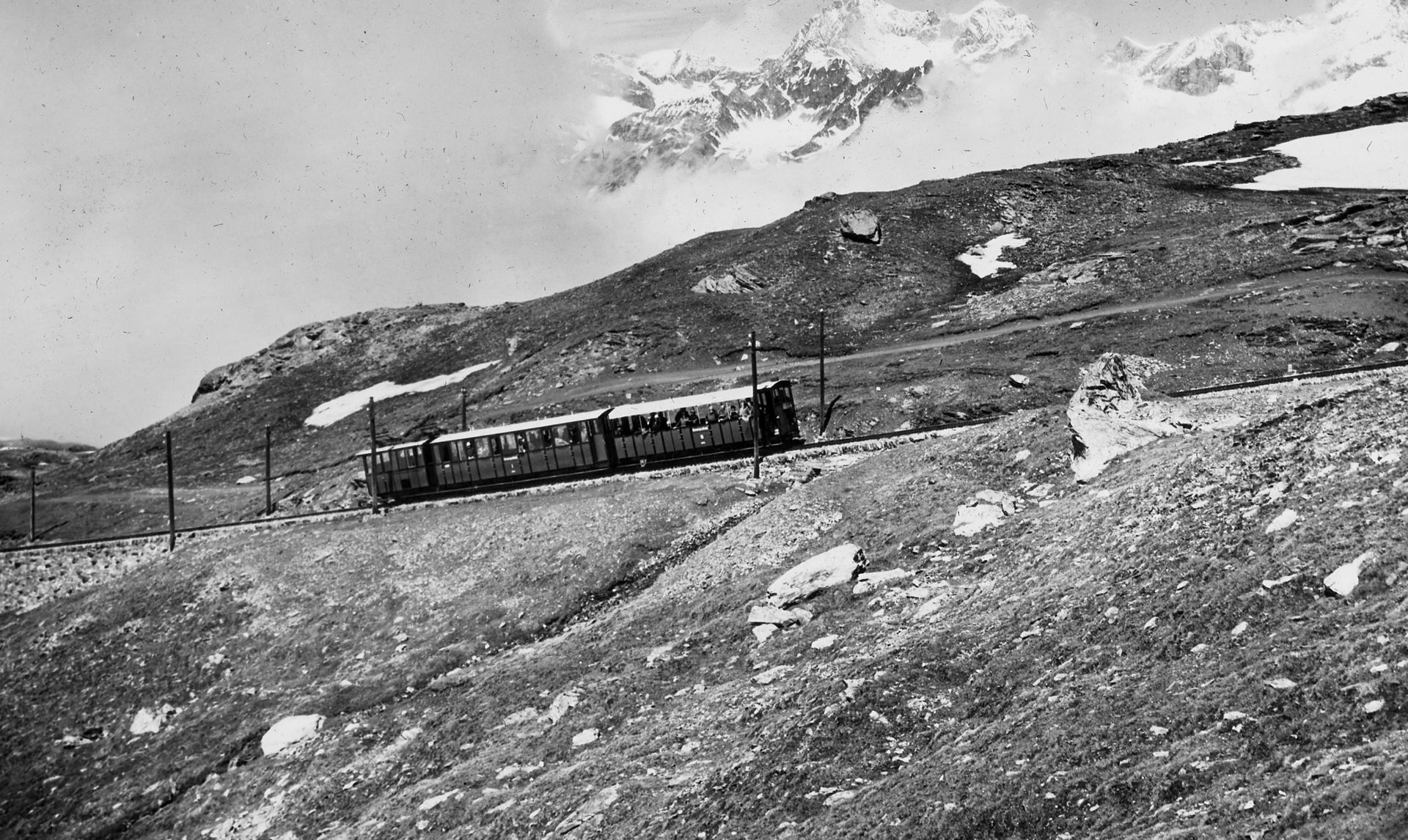How to define the track width
Story 100
Railways in Switzerland have different gauge widths. During the planning phase in the 1890s, the builders of the Gornergrat Railway had to make an important decision regarding that width.
Standard gauge versus narrow gauge
Most of Europe seems to use what is called the standard gauge. Here, the distance between the inner edges of the rail heads is 1,435 mm. This is also the gauge used by Swiss Federal Railways.
Railways with smaller gauges are referred to as narrow-gauge railways and those with larger gauges are referred to as broad-gauge railways. Switzerland’s entire rail network consists of 5,317 kilometres of rail (as of 2020). Narrow-gauge railways cover over 1,000 kilometres of this. For cost reasons, narrow-gauge railways were usually built in the often narrow valleys with many tunnels.
Starting point for mountain railways
When the engineers at the Gornergrat Railway carried out research in 1896 on existing railways with rack-and-pinion/cog lines in mountainous areas, they found there were a number of different approaches: the Arth-Rigi Railway had a standard gauge.
Other railways – such as the Visp-Zermatt Railway and the Bernese Oberland Railway – had a gauge of 100 cm. The trains of the Wengeneralp Railway ran on tracks with a width of 80 cm.
Definition in construction contract
Xaver Imfeld, who was also involved in the planning of the Visp-Zermatt Railway (VZ) as an engineer and topographer, planned the construction of the Gornergrat Railway as a continuation of the VZ which is why he set the gauge of the Gornergrat Railway at 100 cm.
The gauge is also specified in the conditions for the construction of the Gornergrat Railway from 1896 and was thus an important point in the construction contract between the banks and the construction company Haag & Greulich. In Article 43, the parties agreed as follows: “The railway will be built as a single track with a gauge of 1.0 m and with the necessary passing points at the stations.”


